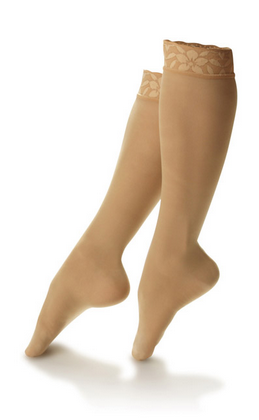Introduction
In today's fast-paced world, where health and well-being are paramount concerns, compression socks have emerged as a surprising yet effective solution to promote both activity and pain relief. This article explores the various health benefits associated with compression socks, their mechanisms of action, and their implications for maintaining an active and pain-free lifestyle.
Understanding Compression Socks
Compression socks are specialized garments designed to apply gentle pressure to the legs, ankles, and feet. This pressure is graduated, meaning it is tightest at the ankle and gradually decreases as it moves up the leg. They are typically made from elastic materials that provide support while allowing flexibility and comfort for the wearer.
How Compression Socks Work
The primary function of compression socks is to improve blood circulation in the lower limbs. The graduated pressure exerted by the socks helps to facilitate the return of blood to the heart, reducing swelling and discomfort in the legs. This mechanism is particularly beneficial for individuals who spend long hours sitting or standing, as it helps prevent blood from pooling in the veins.
Health Benefits of Compression Socks
1. Enhanced Blood Circulation
Poor circulation can lead to various health issues such as varicose veins, deep vein thrombosis (DVT), and leg ulcers. Compression socks promote better circulation by exerting pressure on the veins, which encourages blood flow back to the heart. This not only reduces the risk of developing circulatory problems but also alleviates existing symptoms.
2. Reduced Swelling and Edema
Edema, or swelling caused by fluid retention, commonly affects the legs and feet. Compression socks help to prevent and reduce edema by preventing fluid buildup in the tissues. This is particularly beneficial for pregnant women, travelers on long flights, and individuals recovering from surgery.
3. Prevention of Varicose Veins
Varicose veins are swollen and enlarged veins that often appear on the legs and feet. They can be painful and unsightly, affecting both physical comfort and self-esteem. Compression socks provide continuous pressure on the veins, which helps to prevent them from stretching and bulging, thus reducing the likelihood of developing varicose veins.
4. Alleviation of Leg Pain and Fatigue
Many people experience leg pain and fatigue, especially after prolonged periods of standing or physical activity. Compression socks provide support to the muscles and reduce vibration during movement, which can help decrease muscle soreness and fatigue. This makes them popular among athletes and individuals with physically demanding jobs.
5. Faster Muscle Recovery
Compression socks have been shown to enhance muscle recovery after intense exercise or physical exertion. The increased blood flow to the muscles delivers oxygen and nutrients more efficiently, while the compression helps to flush out metabolic by-products like lactic acid. This accelerates the healing process and reduces muscle soreness post-exercise.
Who Can Benefit from Compression Socks?
1. Athletes and Active Individuals
Compression socks are widely used by athletes to improve performance and aid in recovery. They help to reduce muscle fatigue during exercise and promote faster recovery afterward. Many professional athletes incorporate compression wear into their training regimens to maintain peak performance.
2. Individuals with Medical Conditions
People with certain medical conditions benefit greatly from wearing compression socks. This includes individuals with diabetes, who may experience poor circulation and nerve damage in the legs and feet. Compression socks can help manage these symptoms and reduce the risk of complications such as diabetic neuropathy.
3. Pregnant Women
Pregnancy often leads to swelling in the legs and feet due to increased fluid retention and pressure on the veins. Compression socks can provide relief by preventing fluid buildup and improving circulation. They are recommended for pregnant women, especially those who spend long hours on their feet.
4. Travelers
Long-distance travel, especially by air, can contribute to leg swelling and discomfort due to prolonged periods of sitting. Compression socks are a popular choice among travelers to reduce the risk of developing conditions like DVT and to alleviate discomfort during and after travel.
Choosing the Right Compression Socks
When selecting compression socks, it's essential to consider several factors:
- Compression Level: Socks are available in different compression levels, typically measured in millimeters of mercury (mmHg). Mild compression (15-20 mmHg) is suitable for daily wear and mild swelling, while higher levels (20-30 mmHg or higher) are recommended for medical conditions and recovery.
- Fit and Size: Proper fit is crucial for the effectiveness and comfort of compression socks. They should be snug but not overly tight, and they come in various sizes to accommodate different leg shapes and lengths.
- Material: Compression socks are often made from a blend of materials such as nylon, spandex, and cotton. The choice of material affects breathability, moisture-wicking properties, and overall comfort.
Conclusion
In conclusion, compression socks offer a multitude of health benefit of compression socks that extend beyond mere comfort. By improving circulation, reducing swelling, and alleviating leg pain, these socks promote an active and pain-free lifestyle for individuals of all ages and backgrounds. Whether you're an athlete looking to enhance performance, a frequent traveler seeking relief during long flights, or someone managing a medical condition like diabetes, compression socks can play a vital role in maintaining your overall health and well-being.





Comments